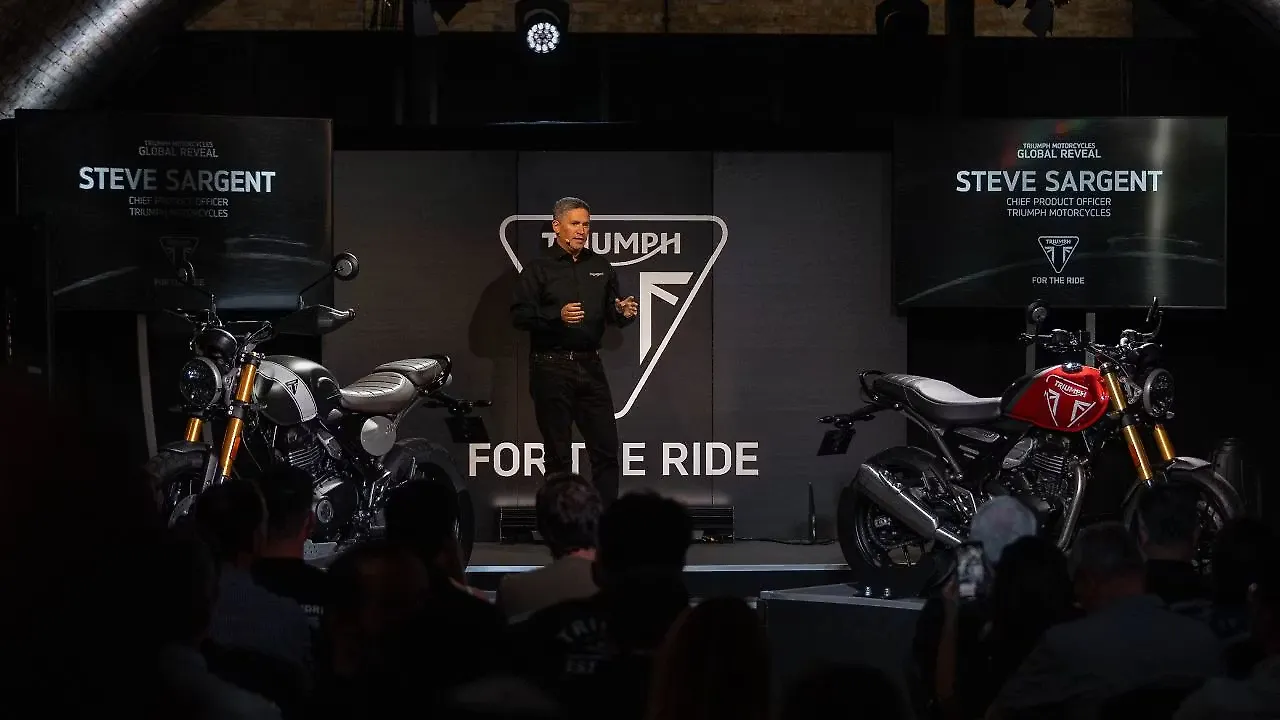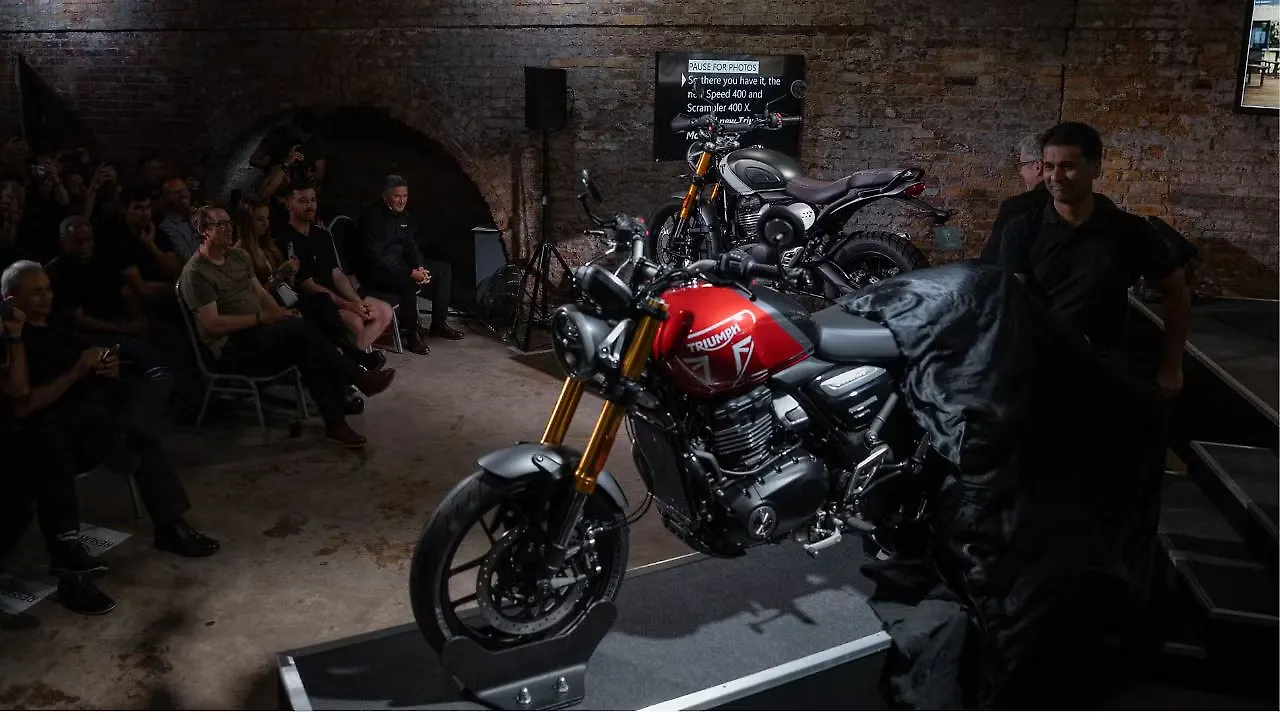
With the unveiling of the Speed 400 and Scrambler 400 X in London on June 27, Triumph Motorcycles and Bajaj Auto are now set to take their partnership to the next level. The two had first announced their intent to join hands way back in 2017 to make mid-capacity motorcycles for India and the world.
The Speed 400 and Scrambler 400 X, according to a press release, are designed to deliver a fun, agile and confidence-inspiring ride for riders of all ages and experience levels.They represent “incredible value for money” and bring Triumph’s iconic style, quality and performance to a whole new generation of Triumph riders. The bikes were conceived and designed in Hinckley, UK.
The official launch will follow at the Bajaj Auto premises near Pune on July 5. The company’s Chakan facility will be the manufacturing base for the Speed and Scrambler, which will not only be sold in India but exported to a host of regions seeking midsize bikes in the 300-700 cc range.
It was during the 2018 EICM show in Milan when Steve Sargent, Chief Product Officer, Triumph told this writer that the partners had a clear idea of how they wanted to address this segment of the market and also in a way that the offerings could be recognised as belonging to Triumph.
After all, the brand had a very long and strong history and the time had come to grow beyond the West and “tap fully” into markets like India. Sargent had worked in Thailand for ten years and had also helped set up Triumph’s earlier assembly operations in India (when it was an independent entity with a plant in Haryana) as well as Brazil.
“For us, the focus is always on the customer: just not what they want from the product but what they expect from a Triumph product. That is the critical thing from my point of view,” he said during the interview.
Unique Offerings
The bikes planned with Bajaj Auto had to be in a league of their own and not ‘me too’ products that were already out in the arena. “We need to find our own place in the market somewhere and something distinct that we can own and develop. That is what we must focus on,” said Sargent.
This is where his own stints in Thailand and Brazil were useful reference points for this project with Bajaj Auto even though each region had its own specifications. Hence, it was a “very difficult thing to say” if a product for India would be as successful in markets like Thailand, Indonesia, or the Philippines.

“It really does not work like that. Every market has its own different dynamics and DNA,” said Sargent while driving home the point that manufacturers needed a broad range of products to be successful. Brazil, for instance, was strong on adventure bikes while classic bikes were more dominant in France or the UK.
In India, continued Sargent, Triumph had had good success with the modern classics early on and there was no distinct shift towards adventure bikes with more and more people going on long rides, especially during the weekends.
“What we have been doing more specifically is market research focused on what the product needs to be for the collaboration with Bajaj Auto,” he said.
Growth in motorcycles has been almost flat in mature markets and the bigger game clearly was Asia, where countries like India and China mattered. While Thailand, Indonesia and the Philippines promised plenty in ASEAN, Latin America, likewise, looked interesting.
Emerging Markets
With the Bajaj partnership, Triumph can expand its business into more emerging markets and reach out to a larger buyer base with a slew of products. The alliance will also play a big role from the viewpoint of localisation, costing and economies of scale.
Where a lot of people “make the mistake in emerging markets,” said Sargent, was that they “think it is about driving the price points. That is never the story; the story is really offering customers something that is valuable at a price they can afford.”
Nobody wants to think that they bought a cheap version of something else. “What you have to do is give something that they can see as premium and a quality product,” he added. The “strong positive” with Triumph is that it had emerged as a well-known brand in India when it had first set out some years ago as an independent entity.
“That fact is coming through very strongly now when we go out and research customers. When we ask them about different brands in the market, it is quite clear that we have done a great job in positioning Triumph,” said Sargent.
According to him, the midsize motorcycle category would play a key role in “bringing people into a brand for the first time.” He said manufacturers would need to become more agile and nimble in their thinking while being open to different solutions.
That is why a whole lot of collaborations are coming out lately as in the case of Hero-Harley, TVS-BMW Motorrad (as well as the recent buyout of Norton), Bajaj-KTM etc. “People have to really focus on new opportunities and think differently in terms of affordability. This means thinking out-of-the-box,” said Sargent.
Also Read:
Bajaj Auto, Triumph Motorcycles Launch Next Phase Of Partnership